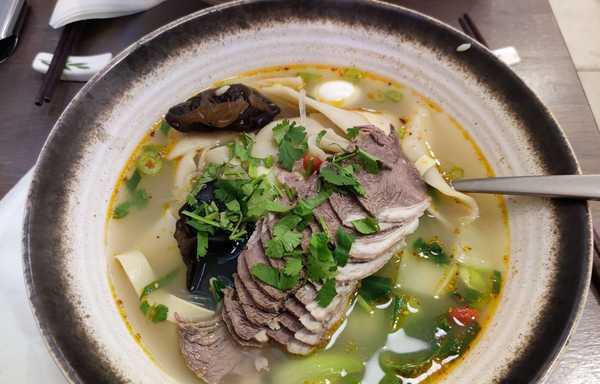Why Henan Lamian Remains a Local Delicacy
An analysis of why Zhengzhou’s signature lamb noodle soup hasn’t achieved widespread popularity beyond China’s Henan province, despite its rich culinary heritage and unique taste profile.

The story of Henan lamian (lamb noodles) is deeply intertwined with the history of Zhengzhou, China. This iconic dish originated in the 1960s and represents a perfect marriage of hand-pulled noodles and slowly simmered lamb broth.
The dish’s limited geographic reach can be attributed to several key factors. First, the preparation method demands considerable expertise and time. The signature milky-white lamb broth requires hours of careful simmering with quality lamb bones, while the noodles must be hand-pulled to achieve the perfect texture and elasticity. This labor-intensive process makes standardization and chain operations challenging.
Another crucial element is the specific taste profile. The dish’s foundation - lamb broth - carries a distinct flavor that, while beloved in certain regions of China, doesn’t universally appeal to all palates. This cultural and taste preference barrier has naturally limited its expansion.
The historical development of lamian in Zhengzhou also plays a significant role. The dish emerged from the city’s unique post-1949 urban development, starting with the famous Heji restaurant. Unlike many other Chinese noodle dishes that evolved over centuries, Zhengzhou’s lamian has a relatively recent history, which means its culinary traditions and techniques haven’t had time to spread widely.
The preparation presents significant operational challenges for restaurants. The need to maintain large pots of constantly simmering broth and employ skilled noodle masters makes it difficult to maintain consistent quality across multiple locations. Modern attempts to streamline the process often result in compromised taste and authenticity.
Today in Zhengzhou, the landscape of lamian restaurants reflects these challenges. While there are numerous establishments serving the dish, only a handful maintain the traditional methods that produce the authentic taste. The dish remains primarily a local specialty, best experienced in its city of origin where the culinary knowledge and traditional techniques are preserved.
This geographical limitation, however, doesn’t diminish the dish’s cultural significance. Rather, it exemplifies how some culinary traditions resist modernization and standardization, preserving their authentic character at the cost of wider commercial success.